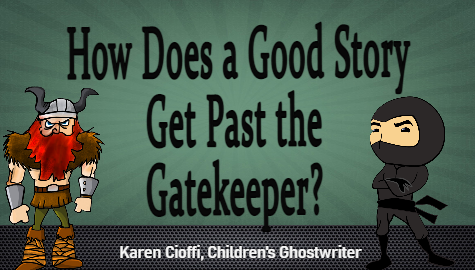Just about every author knows about the “gatekeeper.” The dreaded acquisitions editor who decides if your manuscript is worthy of her attention and the publishing house’s backing. In other words, it’s the editor who decides if your manuscript is worthy of a publishing contract.
To make sure your ‘good’ story becomes a ‘worthy’ story, the Writer’s Digest article, “7 Simple Ways to Make a Good Story Great” gives excellent tips on just what it takes to create a ‘worthy’ story.
The author of the article, Elizabeth Sims, explains that “there are subtle differences between fiction that’s passable and fiction that pops—fiction that shows that you know what you’re doing.”
So what are those 7 strategies or tips?
1. Well, the first tip mentioned is the five senses. Sims says writers have to go beyond what is expected. Editors and agents want more. “They want physical business that deepens not just your setting, but your characterizations.”
2. Next on the list is the use of idiosyncrasies. Each of us has some idiosyncrasy, some weirdness, some form of irrational behavior that makes us unique and interesting. Using those characteristics deepens and broadens your characters.
3. Third up is realism. Sims says, “Forget about being pretty.” Write it as it is. Don’t worry about it being raw, dark, or unpopular. Don’t go for the popular or expected; make it real.
4. The fourth on the list is to write without ‘dumbing’ it down. Readers are savvy, and most are educated. They don’t want to be written down to, told what and when to think. Let them fill in the empty spaces.
5. Fifth on the list is to keep it focused and moving forward. I’ve read a number of manuscripts that had ‘pausing’ information – content that wasn’t needed in the story, and that would make the reader pause, wondering why it was in there. Causing a reader to pause while reading is never a good thing. Pausing causes distraction, which may keep the reader from turning the next page.
6. Next up is the use of laughter. Wit and understated humor go a long way in increasing engagement in a story. And, even if your novel is on the serious side, there will be moments in it that you can lighten it up with a bit of subtle humor.
7. The final tip is to “make them cry.” Sims aptly notes that, “Lots of books make readers laugh and lots make readers cry, but when readers laugh and cry while reading the same book, they remember it.”
The gatekeepers have keen eyes, looking for weaknesses in your manuscript. Use these seven tips to help get past those gatekeepers.
To read the Writer’s Digest article, click the link:
7 Simple Ways to Make a Good Story Great

Writing a Fiction Story – Walking Through Walls Backstory
Learning to Write for Children – It’s More Than Just ABC
Is Your Manuscript Ready for Submission?

I’m a working children’s ghostwriter, rewriter, and coach. I can help turn your story into a book you’ll be proud to be the author of, one that’s publishable and marketable. OTHER HELP I OFFER: HOW TO WRITE A CHILDREN'S FICTION BOOK A DIY book to help you write your own children’s book. FICTION WRITING FOR CHILDREN eCOURSE 4-Weeks / 8 Sections / Instructor Guided Self-Study Program WRITERS ON THE MOVE SELF-PUBLISHING SERVICE Self-publishing help for children’s authors (Picture books and chapter books) You can contact me at kcioffiventrice@gmail.com.


7 thoughts on “How Do You Make a Good Story Worthy of Getting Past the Gatekeeper?”
Comments are closed.